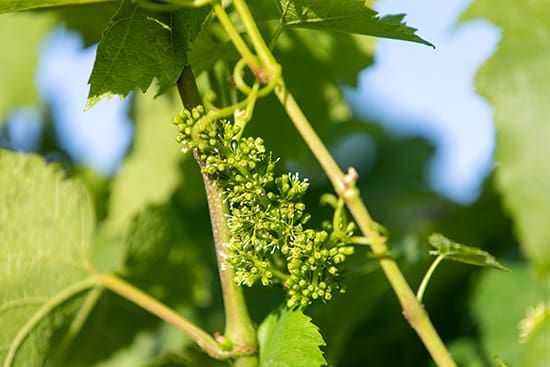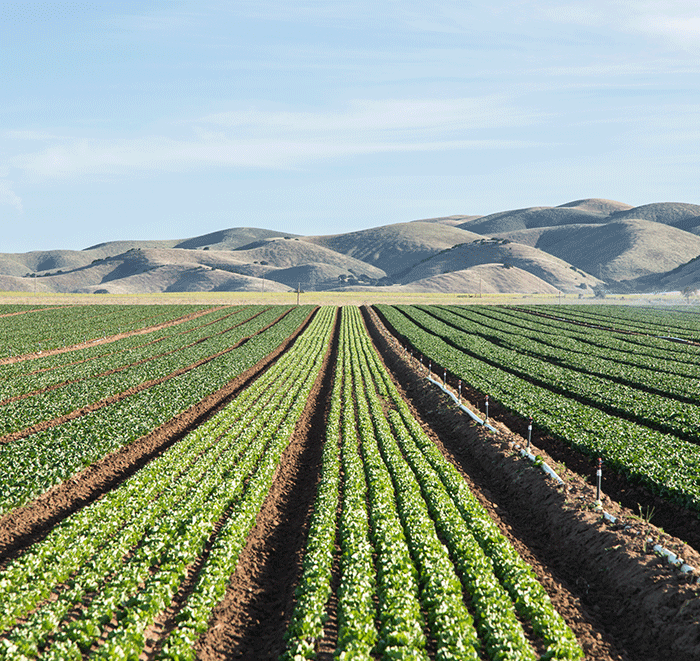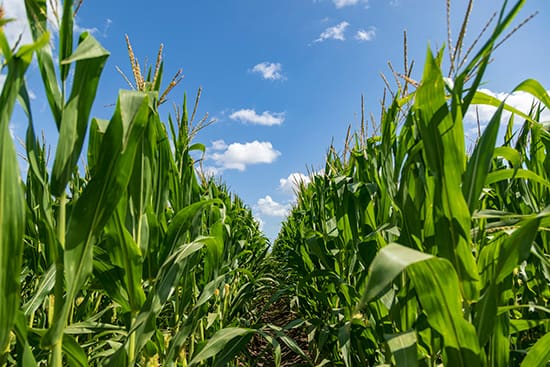Set the Stage Early for a Strong Finish
Key fundamentals to help crops perform from start to harvest
A strong start leads to a successful finish—but that’s easier said than done when it comes to the growing season, thanks to agronomic hurdles and day-to-day demands.
That’s why zeroing in on the right fundamentals at the right time is critical. Follow these timely recommendations to stay focused, act decisively, and make the most efficient use of your investment for long-term crop success.
1. Know your soil’s story.
Success begins with the soil. Without understanding your soil’s unique profile, you can’t be 100% sure which nutrients to apply, how to apply them and when to apply them.
“It all starts with soil health, regardless of what crop you have in that block or in that field, that doesn’t change,” says Juan Rosales, Wilbur-Ellis Sales Manager, South San Joaquin Valley, based in Fresno, California. “Success begins with analytics, understanding what your field lacks and what its soil can deliver.”
For example, use grid sampling results to better address soil fertility issues or other crop-limiting factors. That insight can help you decide whether fixing the issue will pay off.
“If you don’t know what your problems are, how do you know what it’s going to cost to remedy them?” says Rosales.

2. Scout early and often.
“Only with regular scouting can the challenges affecting crop performance be identified and the right solutions be recommended,” says Annette Puvaloski, Wilbur-Ellis Sales Manager based in Marlette, Michigan.
Be on the lookout for weeds, disease and pests – and not from the cab of your pickup. Walk your crops, vineyards and orchards. “Good early-season weed control is more imperative than ever because of resistant weeds,” adds Puvaloski. You may not realize how much more costly it can be when you let weeds get away from you.
Evaluate the effectiveness of your pre-emergence weed control program and determine if future changes are needed.
Then, carefully plan and execute needed post-emergence weed control programs based on weed pressure and species present.
Also regularly evaluate disease and insect pressure, beginning early in the season, to help take proper corrective actions at the right time.
3. Take tissue samples. Don’t guess.
Invest in tissue analysis. These results help you and your agronomist spot and fix nutrient gaps before they hurt your yield.
“Tissue samples help us evaluate which nutrients may be missing within the field and help develop a foliar feeding program to give the plants what they need when they need it,” says Puvaloski. “The results tell a story you can’t always see with your eyes but have a significant impact on yield.”
In a difficult commodity price year, tissue sampling also offers growers an additional form of risk management. “If you have tissue test results and determine exactly what inputs are needed, growers then know their return on investment, making foliar applications less risky because they can make up the money spent with a higher crop output,” she adds.
4. Monitor factors affecting specialty crop potential.
As things heat up for the summer, this is the best time to revisit how much water your orchard or vineyard needs. Check historical records. Plan with facts, not assumptions.
In addition, assess water quality to ensure it doesn’t include unwanted salts or other elements that can limit crops or crop protection tool effectiveness. Water conditioners and adjuvants are often smart investments to overcome water quality challenges.
Consider tools to help crops better deal with heat stress. Agronomic trials with CHILLAX®, a flowable micronized calcium carbonate foliar product, have shown encouraging results in mitigating the effects of heat stress.
This is also the time to assess the crop load compared to last year and determine the inputs needed to reach maturity.
“There are moments during the year when you must make important decisions, and right now, in almonds and grapes, it’s time to ask, ‘OK, are we on track?’” says Rosales. “Take time to determine inputs needed and whether you’ll get a return on your investment. Don’t simply follow the same program because that’s the way you’ve always done it.
“In grapes, for example, conduct bunch counts and weigh the expected crop against the cost of planned inputs. If market prices don’t support your original plan, now is the time to pivot. Seek cost-effective solutions that will protect vineyard productivity today and into the future.”

5. Eliminate factors affecting row crop potential
What happens when you don’t manage early-season weeds in crops like corn and soybeans? Nothing good.
“I think a lot of growers don’t realize how much yield they risk losing by allowing weeds to get too big or out of control before treating fields,” says Puvaloski.
Research shows that if you plan to spray soybeans when weeds are 4 inches tall, even a two-day delay can be costly. Just those two days can lead to yield losses of 1.5 to 3 bushels per acre per day, which can equal up to $38-$86 per acre in lost profits.[1]
Letting weeds get ahead in corn is expensive, too. If they aren’t controlled before reaching 6 inches tall, yield losses can hit 7 bushels per acre, costing you about $32.06 per acre at $4.58 a bushel. Let them grow to 12 inches, and the damage jumps to 31 bushels per acre. That’s a loss of nearly $142 per acre.1
6. Turn off emotions.
Lastly, remove emotions from decisions, as difficult as that may be. Rely on expert, data-based advice from trusted partners and advisors.
Crop prices matter. But in tough years, smart management matters even more. “Spend your money where it needs to be spent and understand what’s going on in the field to make the best decisions possible,” says Puvaloski.
“When you make decisions based on emotions instead of facts, it costs you money,” Rosales concludes.
Talk with your local Wilbur-Ellis agronomist to make smart in-season decisions to gain an edge on crop success. Learn more here.
[1] Burns E, Sprague C. 2021. Protecting crop yields starts with early season weed control. Michigan State University. Available at: https://www.canr.msu.edu/news/protecting-crop-yields-starts-with-early-season-weed-control .

